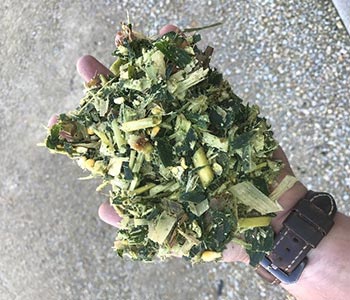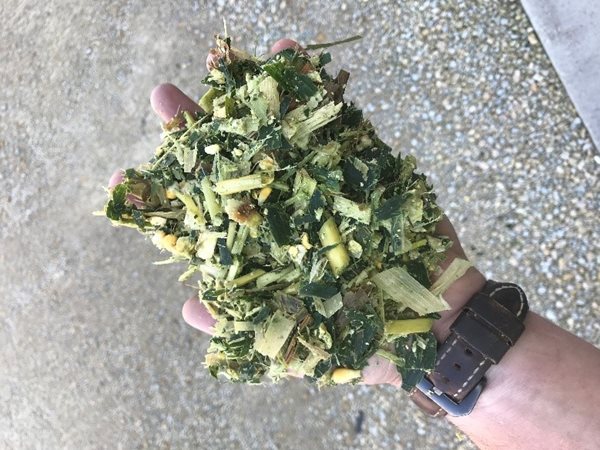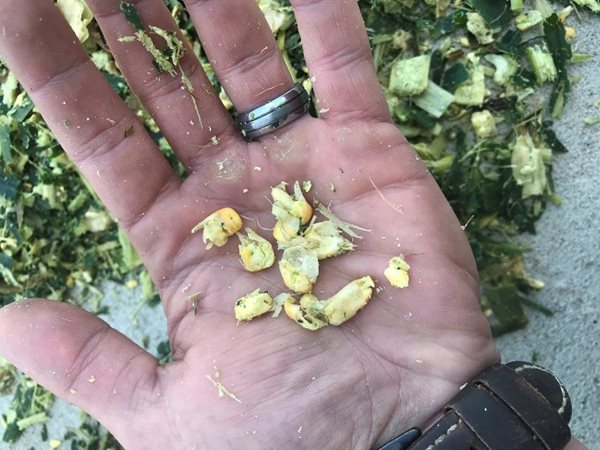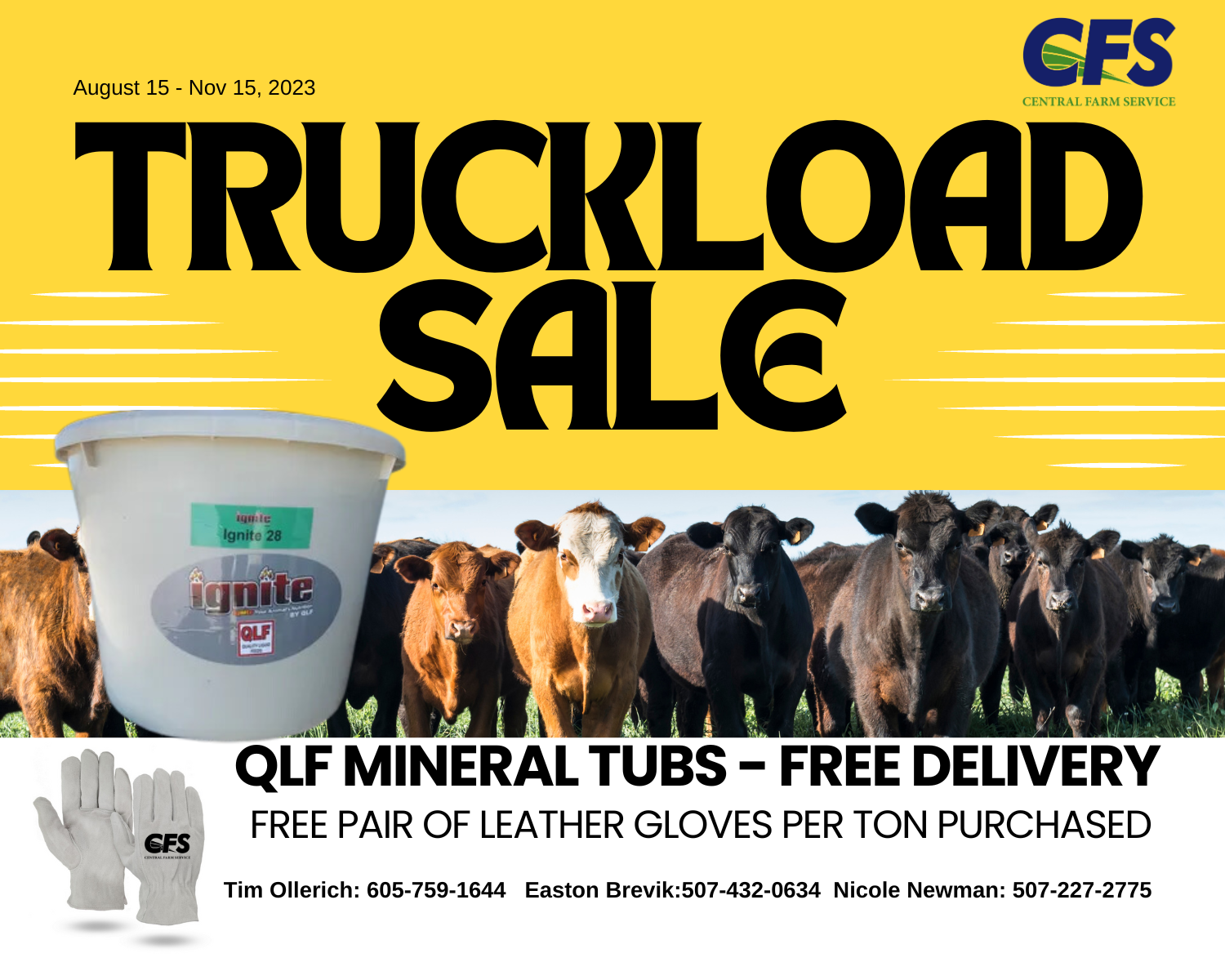Corn Silage Quick Tips
Sep 11, 2018

Corn Silage Quick Tips
by Cody Tix, CFS Regional Sales Agronomist
Optimal Whole Plant Moisture
This is the most important step in producing high-quality corn silage. 65% is the number that I use for optimal moisture when putting silage up in a silo, bag or bunker. Typically this is between 1/2 and 3/4 milk line. The best way to get an accurate whole plant moisture is by taking a sample of plants in to get a burndown test and not going solely off milk line. If silage is too wet we can see poor fermentation and lose nutrients through seepage. If silage is taken too dry you will typically find poor compaction in storage which also leads to poor fermentation and mold.
Length of Cut
Ideal length of cut might be different depending on the type of equipment your grower has. If your grower does not have a kernel processor on their chopper your theoretic length of cut is a little better than a 1/3 of an inch. This is because if we cannot pulverize those kernels and cobs we need to decrease our length of cut to make up for digestibility. If the chopper does have a kernel processor we can lengthen that cut out to a theoretic length of 3/4 of an inch. We call this theoretic length of cut (TLC) because it is a compromise of silage that is fine enough for good fermentation and detestability but at the same time needs to be long enough to promote cud chewing for proper digestion. If your silage is too course you will decrease digestibility and increase “sorting”. You will find this after you feed the cows and see that they are actually sorting out the larger chunks of cob and rind to focus on eating the finer more digestible feed in the ration. If your cut is too fine you can actually make corn silage too digestible, meaning the cows do not form a proper rumen mat in their stomach to slow down digestion (cud-chewing) and break down nutrients. This will completely throw off your ration and the constancy of your herd.

Kernel Processing
If the chopper you are dealing with has a processor it is important to make sure that It is set correctly. When I analyze kernel processing I take a quart jar along with me, fill it with silage from the pile and then spread it out. If I find 3 or more unpulverized kernels in 32 ounces we need to adjust the speed on the roller mill. Crop processors are expensive, but there is a study from Penn State that shows an average increase of 300lbs pounds per cow per year because of the higher quality silage produced. Below is an example of what properly processed kernels should look like.

Storage
This is where everything that I have listed above comes together. Optimum moisture, proper cut length, and processing are going to result in a good quality/ high-density silage that will be ideal for packing and fermentation. I deal mostly with bunkers and drive over piles so packing is very important. Packing silage is going to ferment more quickly and decrease oxygen pockets that contain molds. The target corn silage density in a pile is to exceed 15lbs of dry matter per cubic foot. Bunkers or piles should be covered with plastic immediately after filling to prevent loss of feed and nutrients. Silos should be filled quickly, within a week of harvesting to eliminate as much air as possible from the feed.
